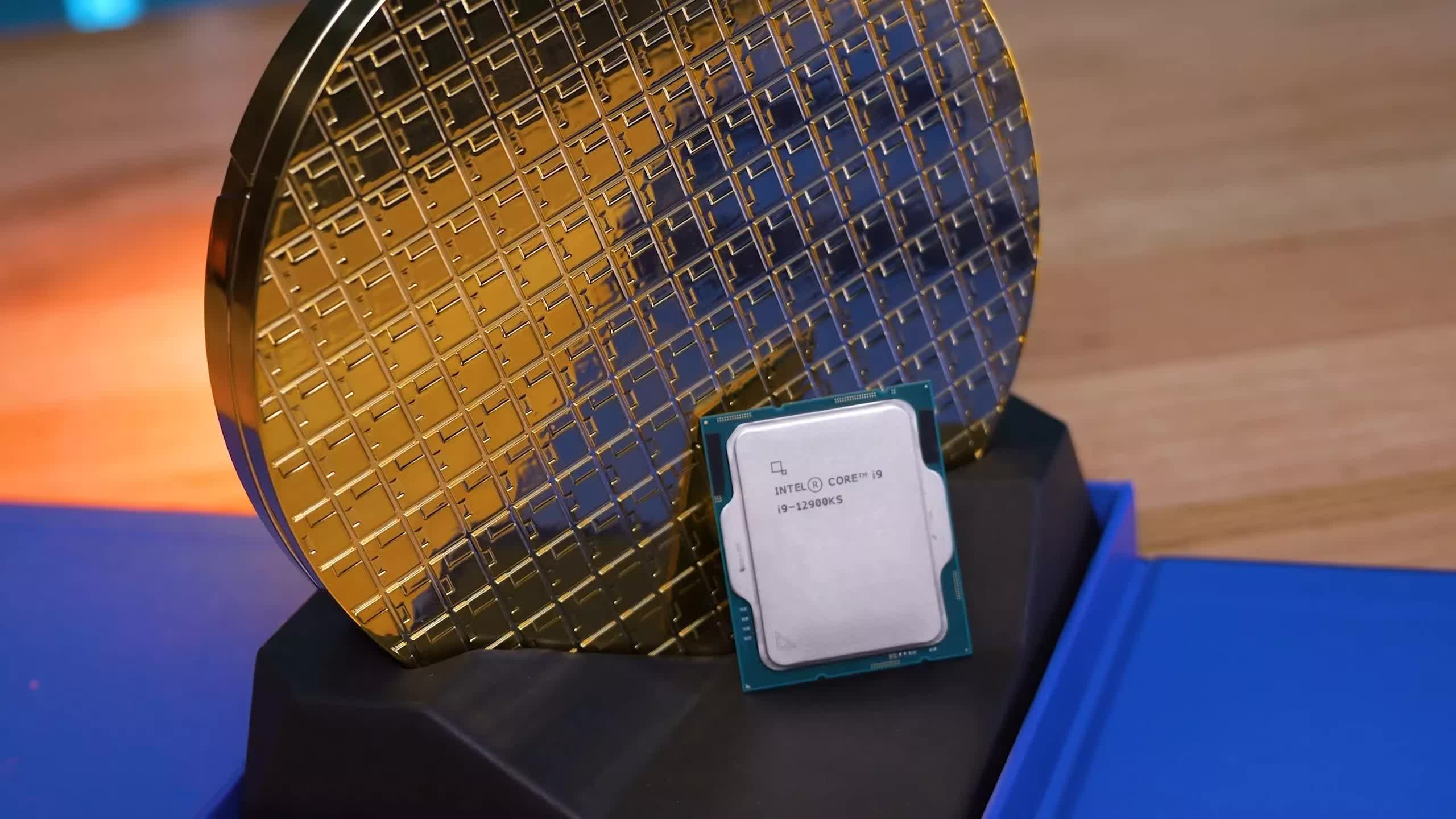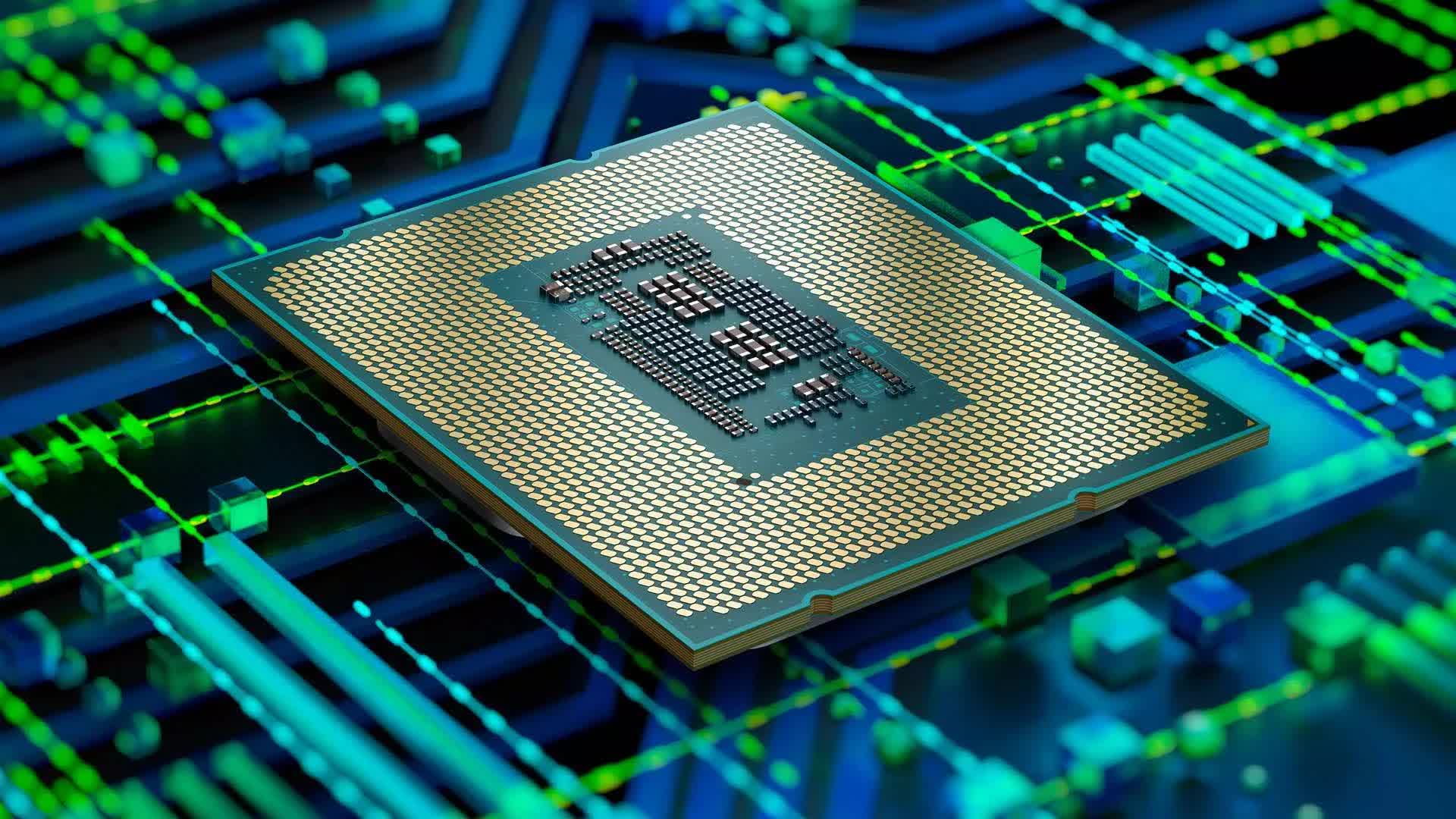In brief: Next-gen GPUs are expected to reach new heights in terms of power consumption, but it looks like upcoming Intel CPUs won't be too far behind. Team Blue is reportedly preparing a new overclocking profile for upcoming enthusiast-grade Raptor Lake CPUs that will enable more performance at the cost of increased power consumption and heat output.
Intel's Raptor Lake lineup is expected to debut sometime in October, with the first models shipping later this fall. Leaked internal documents have confirmed the new processor designs won't stray too far from their Alder Lake counterparts, so they're likely refined versions of existing 12th-gen parts that are manufactured on an Intel 7 process node.
All hints, rumors, and leaks so far point out that Raptor Lake performance gains will be achieved through higher clocks and thermal envelopes. Recently, a popular Chinese tech content creator was able to get his hands on qualification samples of the upcoming Intel Core i9-13900KF, Core i7-13700K, and the Core i5-13600K, and his findings confirm that given adequate cooling and power delivery, Raptor Lake processors can reach impressive clock speeds.

The upcoming flagship Intel CPU was able to reach a whopping 6.1 GHz using liquid cooling, and power users will no doubt appreciate the overclocking headroom. That said, this comes at the obvious cost of reduced energy efficiency, which may or may not matter for you depending on your use case and energy prices in your area.
According to Hungarian publication ProHardver (via VideoCardz), Team Blue is currently testing a new factory overclocking profile for its upcoming 13th-gen Core i9 series processors. This will be possible thanks to a power limit of 350 watts, which is significantly higher than the default PL2 power limit of 253 watts.
When we looked at Alder Lake CPUs, we found that higher-end models such as the Core i9-12900KS were not only difficult to keep cool but also didn't see much benefit from higher clocks, so the torch will now be passed to Raptor Lake for extracting more performance out of what is now a more mature architecture.
Also read: Intel 12th-Gen Core Alder Lake Architectural Benchmark
ProHardver writes the 350-watt mode on the Core i9-13900K qualification sample can add up to 15 percent better performance, but you won't be able to use it unless you pair it with a high-end 700 series motherboard and one of the best AIO water-cooling kits out there. Enthusiasts might find the added cost a bit harder to swallow, especially since Intel has confirmed that price inflation will soon apply to its consumer product offerings.
Intel isn't alone in driving power consumption up to squeeze more performance out of its silicon. AMD's Ryzen 7000 series processors will likely offer better performance-per-watt, but they too are expected to be more power-hungry at the higher end. The AM5 socket will accommodate processors with TDPs of up to 170 watts, and actual power consumption in heavy workloads may even go north of 230 watts.

Furthermore, AMD has hinted that Zen 4 CPUs will be a boon for overclocking enthusiasts, with special features designed to squeeze the most out of DDR5 memory. It makes perfect sense for Intel to prepare overclocking profiles for enthusiasts that are considering an upgrade to the Raptor Lake platform.
That said, Intel should prioritize platform stability and software support over raw performance. As we've seen with Alder Lake, E-cores aren't exactly useful for gaming, as they cause DRM issues and can even reduce frame rates. More recently, Alder Lake driver issues caused lower performance when using Chromium-based browsers like Microsoft Edge and Google Chrome, further highlighting the importance of proper software optimization.
